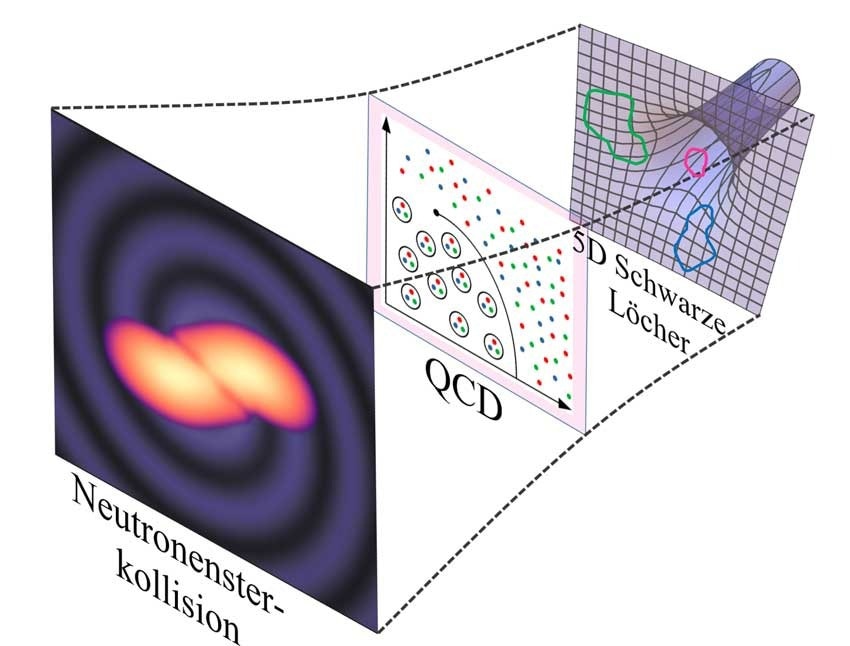Neutron stars are the densest substances in the universe, apart from black holes. Neutron stars, as their name suggests, are primarily composed of neutrons. Scientists still do not entirely understand the matter created when two neutron stars collide.

Illustration of the new method: the researchers use five-dimensional black holes (right) to calculate the phase diagram of strongly coupled matter (middle), enabling simulations of neutron star mergers and the produced gravitational waves (left). Image Credit: Goethe University Frankfurt
Researchers from the Asia Pacific Center for Theoretical Physics in Pohang and the Goethe University in Frankfurt have now created a new model that sheds light on the behavior of matter in such extreme circumstances.
A neutron star is an incredibly compact entity that can arise when a massive star burns through all of its fuel and explodes as a supernova. It would take compressing a big object like the sun to the size of a city like Frankfurt to attain the density within neutron stars, which are incredibly dense.
However, it is unknown exactly what makes up the hot and dense merging product that is produced. For instance, can quarks, which are typically confined in neutrons, emerge in free form following the collision?
With the help of Dr. Christian Ecker from the Institute for Theoretical Physics at Goethe University Frankfurt, Germany, Dr. Matti Jarvinen and Dr. Tuna Demircik from the Asia Pacific Center for Theoretical Physics in Pohang, South Korea, and others, they have now created a new model that brings them one step closer to finding the answer to this question.
In their work, they apply a technique from string theory to describe the transition to dense and hot quark matter, extending nuclear physics models that are not at all relevant at high densities.
Dr. Demircik and Dr. Jarvinen stated, “Our method uses a mathematical relationship found in string theory, namely the correspondence between five-dimensional black holes and strongly interacting matter, to describe the phase transition between dense nuclear and quark matter.”
We have already used the new model in computer simulations to calculate the gravitational-wave signal from these collisions and show that both hot and cold quark matter can be produced.
Dr Christian Ecker, Institute for Theoretical Physics, Goethe University Frankfurt
Together with Samuel Tootle and Konrad Topolski from Prof. Luciano Rezzolla’s working group at Goethe University in Frankfurt, Dr. Ecker put these simulations into action.
Journal Reference
Demircik, T., et al. (2022) Dense and Hot QCD at Strong Coupling. Physical Review X. doi:10.1103/PhysRevX.12.041012.